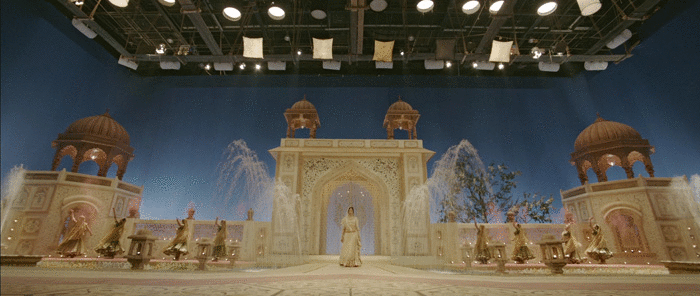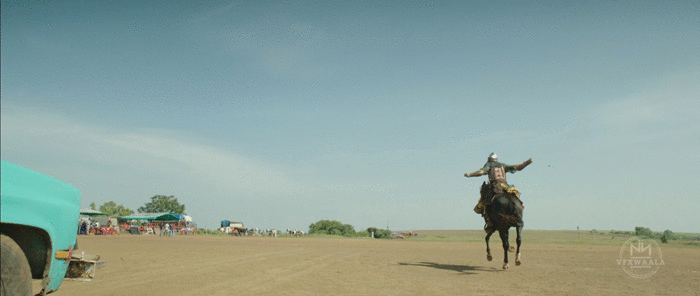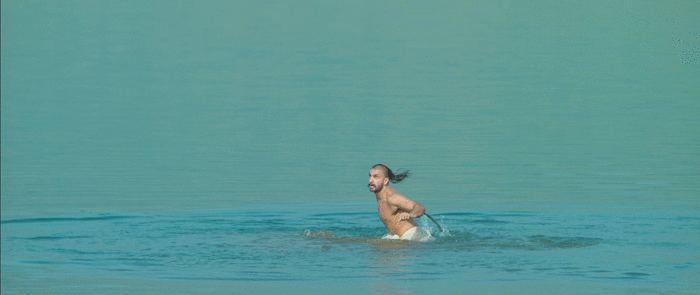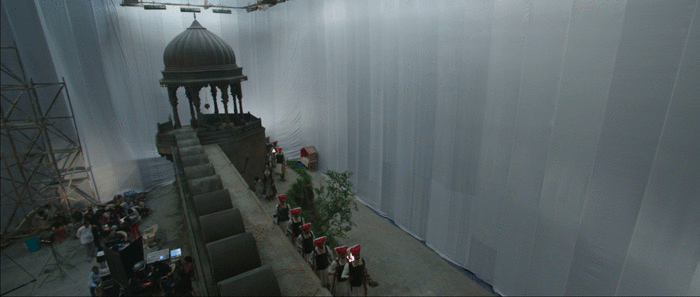When you want to bring something alive, you have to strive till your last breath and channelise all your energy to make it happen. And when you have to bring out a collaboration of history, romance and drama to life, you have to be head on heels at every moment, fine tuning every minute detail with emotions and perfection.
A film which captivated viewers across the globe by its dramatic storytelling, grandeur of history and power of love – Bajirao Mastani was a visually appealing movie enhanced by the immense amount of VFX work. NY VFXWAALA, a division of Ajay Devgn Films, delivered this film over a span of eight months in terms of CGI creation and visual effects with a team of 50 to 60 artists working on it.

The movie vividly proclaimed the unique filmmaking style of Sanjay Leela Bhansali through the glorious appeal, majestic costumes, monumental backgrounds and luxurious architecture. However, the 1400 VFX shots produced for the film right from large background creations to minute weapons escalated the story from a splendid drama to a royal big screen movie.
“What was not possible to shoot in live action was created using CGI and VFX. Bajirao Mastani was a romantic drama of a historic event thus, every VFX shot had to look real and also had to have a connection to history. Every shot had an emotion and thus demanded its respective colour palette and background elements to bring out the feel and tone of the scene,” claimed NY VFXWAALA, VFX supervisor, Prasad Sutar.
Prasad Sutar opens up about the work carried in this historic drama film with AnimationXpress.
How did the association happen between NY VFXWAALA and Sanjay Leela Bhansali?
After having supervised Ram-Leela, Bhansali sir’s next film Bajirao Mastani undoubtedly fell onto my shoulders. Working with such a legendary filmmaker has always been a learning experience but it also brings in a load of responsibilities and expectations. I had to always keep up to the standards of his production scale and larger than life concepts of filmmaking.

How were the VFX shots decided?
Our team was involved right from the scripting stage. And throughout the shooting process, we would discuss and analyse whether a particular shot was possible to shoot live or else it would be created in CGI and VFX. I still believe in keeping minimum green screen and shooting live as much as I can. Then I take these shots as references and add effects to it because the feel of live shots is quite different and realistic. Thus, every shot was well conceptualised. Software like Photoshop (matte painting), Maya (animation, VFX), 3ds Max (animation, VFX) and Nuke (compositing) were used.
What were the major VFX sequences?
The opening war wherein the entire army was created using CGI, was shot in broad daylight and then converted into night. The close ups were shot indoor therefore we had to match and blend all the shots together. This sequence itself had around 300 VFX shots with minute detailing as this was the introductory sequence.
The climax sequence had live water shot on camera with CGI horses, arrows and fireballs. Bhansali sir had visualised the climax but our team enhanced the scene with our own thoughts and ideas. The climax took around 15 to 20 days to be completed with perfection.

Bhansali sir wanted the opening of the film to be grand and I wanted the film to open in a unique way too. But throughout the whole filmmaking process, we couldn’t figure how to do it until we finally thought of using animation. It was not a planned sequence and we had less time, so we crafted storyboards and drew the story of Bajirao and his kingdom. Animation was the best medium to convey the designs using utmost liberty within a limited timeline. In fact, all the storyboards for the entire film were hand drawn and then created digitally.
Any peculiar sequences or instances?
In one of the battle sequence, Bhansali sir wanted to shoot around 300 to 400 horses standing in a particular manner. But, it was impossible to achieve these and manage so many horses. Thus, we shot the sequence using just four to five live horses and added the remaining horses using CGI. However, in few other war sequences, we used live horses in large numbers to bring out the realistic feel.
Another sequence where Ranveer Singh (Bajirao) crosses the sea in a boat at night had a huge chunk of visual effects as the entire water was created using CGI. The splashes of the waves, the rain falling except the portion falling on Ranveer, and the night sky were all produced in post production.

How is colour pattern an important part of filmmaking?
Colour helps to set in the mood of every scene; it enhances the emotions of every sequence and sends a distinct feeling to the viewers. As this film was a romantic tale with intense dialogues, colour was an important factor that we had to keep in mind always. For example, for various dark emotional scenes we kept the background greyish with dark night sky whereas for various fresh scenes, the background sky was bright with a shining sun complimented with vibrant colours.
How was it working with Sanjay Leela Bhansali?
Bhansali sir is a highly creative person with great visualisation power. He is a filmmaker who has constantly evolved and is willing to accept change by adjusting to the new technology. While working with him on Ram-Leela, he never preferred VFX and thus used just minimum of it. But in Bajirao Mastani, his confidence in VFX rose to a higher level. He visualised his scenes keeping VFX in mind and undoubtedly believed that VFX could pull his shot and add grandeur to his sequences. Therefore, I have seen him evolve and give the ability of VFX work its due importance and deserving space.
Bajirao Mastani has set a benchmark to take visuals and storytelling to another level. After Baahubali, this is the film that has displayed the potential and expanse of VFX in the Indian film industry. The film grossed $52 million (Rs 350 crore) at the box office and Sutar won several awards like Zee Cine, Screen and the Asian Film Awards for Best Visual Effects for this film. It is a moment of pride and honour that India has been recognised and appreciated for VFX at the Asian Film Award stature in competition to films from across Asia.

